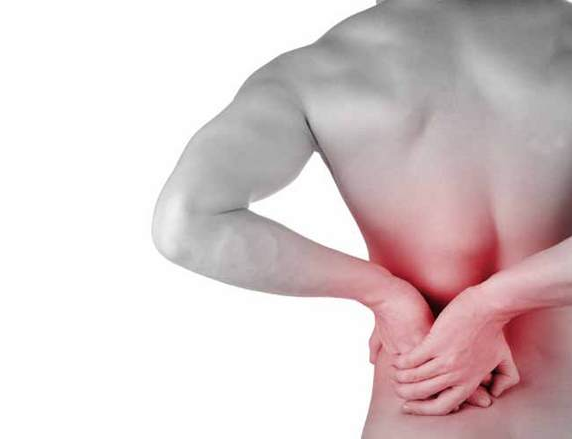“With great power comes great responsibility” but it also stands true that with great flexibility comes great instability - or the need for great stability. Where is my action hero quote to explain this? The shoulder itself is remarkably unstable! The ball and socket arrangement is likened to a billiard ball on a teaspoon - the ball is greater than the socket (or mightier than the sword). So the evolutionary physique came up with the ingenuous creation of muscles and bones and ligaments that form the shoulder.
The shoulder is one of those joints that is the pinnacle of premium force with our playful sports and activities. Perfecting our shoulders and ensuring that we have the premium amount of power and force for our swings (in whatever sport those swings occur) is a long winded, hotly debated and delicate discussion of coaches, athletes, trainers and therapists the world over.
Any movement that involves the overhead pitch action or throwing action is a multi-dimensional and complex combination of active muscles generating force, as well as stabilisers and then braking antagonists that all result in a powerful arc of motion. Throw into the mix the amount of times that athletes embark on this action in their chosen pursuits of athletic perfection and you can see that this action can be a great cause of strain and repetitive stress on a very flexible and ultimately unstable joint.
The overhead pitch is a power move in many sports. Baseball, Tennis, Water Polo, European Handball, Volleyball - even Darts! So there is a lot of concerted effort, research and development that has gone into the perfect swing action. Whilst the emphasis is usually on the muscles of the upper extremity, the kinetic chain (the complex link of actions and muscles that generate force from the foot to the hand) is vast and comes from the moment a foot is lifted to begin generating force that ends in the overhead swing. Don’t discount the importance of lower extremity movers and stabilisers to provide a stable base for torsion of the torso and hips that ultimately influences the amount of power generated in the overhead swing.
Essentially - breaking down the movement, we are looking at external rotation of the shoulder coupled with lateral rotation of the trunk or torso. The action then involves forward linear torso motion together with maximal internal rotation of the shoulder. So simplistically there are two phases - the cock and the release. When you look at these two dynamic phases you can see a line of force that goes from the pelvis across the torso and extends up into the laterally rotated arm. At the centrepoint of this action, lies the shoulder - in particular the Glenohumeral Joint (as opposed to the scapula and AC joint - see anatomy of shoulder) is the pivot point of this gigantic and very powerful action. So it’s easy to understand why the shoulder is going to be important to be STABLE in this action as repetition of this action will wear greatly on the shoulder structure.
THE COCK
In this action we are looking at pelvic rotation, lateral shoulder rotation and lateral flexion of the trunk. In all three of these actions we have to analyse the muscles involved.
Pelvic Rotation - gluteals/Quadratus Lumborum/Lateral Rotators of Hip/Abdominal Obliques
Lateral Shoulder Rotation - Supraspinatus/Infraspinatus/Teres Minor/Middle Trapezius/Rhomboid/Levator Scapulae
Lateral Trunk Flexors - Latissimus Dorsi /Erector Spinae
Important Terms:
Rotator Cuff (Supraspinatus/Infraspinatus/teres minor/subscapularis)
Scapular Movers (rhomboids/serratus anterior/levator scapula/pectoralis minor/trapezius).
You may hear talk of various stabilisers in this motion - notably dynamic and static. The dynamic stablisers are primarily the muscles involved in motion and ensuring that the glenohumeral joint stays in place whilst the muscles act on the joint - Rotator Cuff and Scapular Movers. The static stabilisers are concerned more with the capsular structures such as the glenoid ligaments and sheaths that contain the actual glenohumeral joint. Essentially - muscles and tendons are dynamic (motion) and ligaments fascial sheaths are the static ones (joint capsule integrity)
So in analysing issues with throwing injuries these are important muscles to develop and train. Essentially this means getting onto your shoulder stability. Turning your shoulders into your butt. Standing on your hands, bracing on your hands. Loading up the shoulder in static positions and developing straight arm strength is vital to ensure stable shoulders. Scapular retraction, pronation and depression are the real actions to focus on here and this means working your shoulder in all these positions and particularly working ECCENTRICALLY. Dead Hangs, Powerband work, handstands, side planks and downward dogs are all movements you should master.
“The scapula acts synchronously with the rotator cuff to maintain the glenohumeral center of rotation within a physiologic range during the pitching motion”
THE THROW (ACCELERATION)
When we talk about generating force we talk about the power muscles of the action. Essentially we are looking not just at those muscles that act on the anterior rotation of the extended arm but also at those muscles that act on the internal rotation fo the trunk. In the throwing phase the emphasis shifts to the power muscles of the body and the arm that action the power mode of the movement.
When we look at thoracic rotation (internally) we are looking at the the abdominals (notably internl and external Oblique muscles and not the rectus abdominus) along with the quadratus lumborum and erector spinae are the main proponents of rotation. These muscles are broadly placed from the rib cage and down into the thoracolumbar fascia and deep into the spine. They are very powerful to generate the twisting movement that ultimately generates the kinetic force that we are building up to release the ball or swing the racquet.
The other muscles we need to concentrate are those acting on the arm - in this instance we are looking at the glamour muscles of the Pec Major / Latissimus Dorsi/Anterior Deltoid/ Biceps Brachii. You would think that the big, large latissimus dorsi is the generator of force but it is actually the much smaller Subscapularis (one of the rotator cuffs) that reaches maximum velocity in this action, producing the violent internal rotation of the humerus reaching forces as high as 185% of its maximum muscle test strength.
Perhaps the greatest notion to take from these factors in terms of developing the powerful swing is to not focus on the big muscles generating arm speed, but on the rotation of the trunk. If you are not working on the trunk rotators along WITH the arm movers, you are decreasing your potential velocity and ability to generate power. Working with rotation and the ability to twist and generate force here is going to be the assist you need for this action. It is worth noting that the particulars of your sport may dictate how much rotation you can generate according to limitations. For example, a Water Polo may be unable to generate as much rotation as a tennis player due to the fact that his legs are not stable and his platform is being comromised by having to tread water whilst engaging in the throw. Therefore his swing is going to be more dependent on arm than trunk rotation.
Working with overhead training and actions that mimic the throwing motion are going to help in this instance. working with power bands and medicine balls to mimic the motions of catch and release (think situps with a medicine ball) along with a rotational component (such as GHD situps with a spinal twist) are going to be yoru go to movements along with working on the muscles noted above. You can still generate power in these muscles in a linear fashion such as chin ups and rowing motions but you are going to want to work with rotation as well.
RELEASE (DECELERATION)
This occurs at the top of the swing when the arm has straightened and internal rotation of the humerus has reached its peak. Far from being the slowing down of the movement it is at this high point of the swing where the most violent impact occurs on the shoulder. This is where the all important stabilty of the shoulder joint is vital as we work towards trying to control the ‘shearing forces’ that impact the glenohumeral joint as impact is achieved or the ball is released. The sheer torque on the shoulder joint in this instance reaches a zenith of 300-400N and thus the posterior stabilisers of the shoulder are highly active in stabilising the action and it is here that you will see a lot of work done on development of strength in training in order to prevent overuse injuries. The Trapezius, rhomboids and serratus anterior are highly active in decelerating the arm swing and holding the shoulder together in the capsule along with the eccentric loading of the rotator cuff and biceps brachii. It is here where the damage to a shoulder can occur as all that torsional and kinetic energy is released in a powerful and explosive moment that can impact the shoulder joint greatly.
Eccentrically loading the joint (working in slow retrograde of the motion) is going to help these muscles work together to keep the joint capsule in place and essentially prevent the arm from wrenching the humeral head from it’s socket. This is where your off the court training comes into play, building strength in all those posterior muscles so that they can withstand the impact of the kinetic movements involved.
So you can see how this major action has various stages and is a hugely co-ordinated and precise combination of muscles generating, releasing and decelerating force. It’s a lot for a coach to think about when you are trying to ask players to simply ‘increase their power’ in a swing. And for those of us who don’t have coaches, you may need to think more succinctly about how to generate more power in a swing than just going out and throwing more balls.
Understanding the mechanics of the throw in all three phases is vital and not leaving out any motion in your training plan of attack is going to mean a lot of background work to efficiently get your body to not only be able to generate more power, but control and withstand the impact that is has on the body. It’s a 3 part puzzle.




